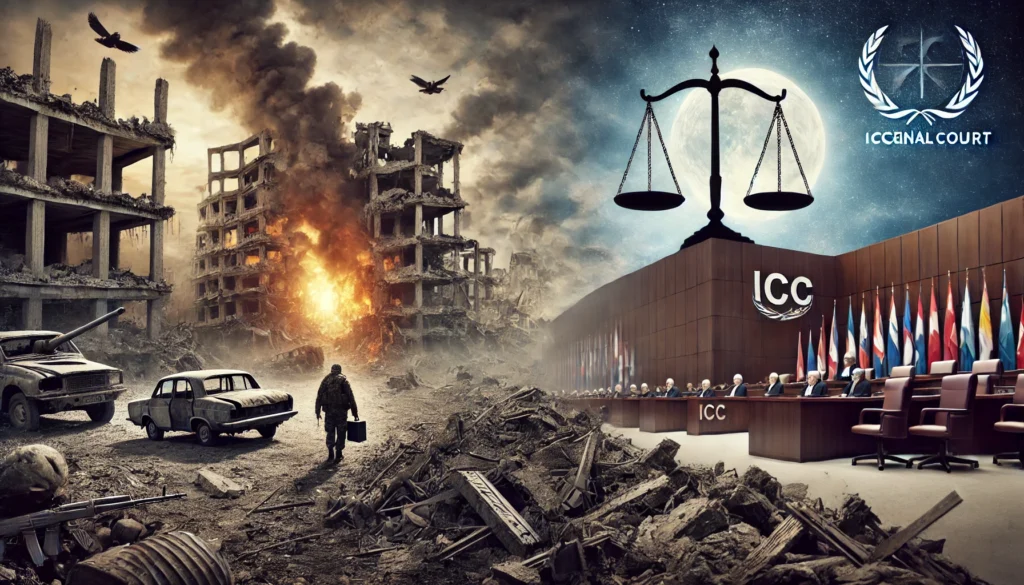Published on: 14th October 2025
Authored by: G. Hemanth
Government Law College, Chengalpattu
1. CITATION
Kehar Singh v. Union of India, (1989) 1 SCC 201, AIR 1989 SC 653.
2. COURT
The Supreme Court of India.
3. BENCH
5-judge bench: Chief Justice R. S. Pathak, Justice M. M. Dutt, Justice K. N. Singh, Justice S. Natarajan, and Justice Ranganath Misra.
4. DATE OF JUDGEMENT
19TH December 1988
5. FACTS OF THE CASE
- THE ASSASSINATION OF PRIME MINISTER INDIRA GANDHI:
Prime Minister Indira Gandhi was murdered by her own Sikh bodyguards on 31st October 1984[1]. After this incident, huge riots and tensions were triggered in the nation, along with the problems created by the operation ‘Blue Star’.
- ALLEGATIONS AGAINST KEHAR SINGH:
Kehar Singh, a government officer in the ‘Directorate General of Supply and Disposal’ who was charged with being one of the murderers who killed the Prime Minister. He is accused of having misled Beant Singh by promoting anti-government and religious feelings. Shankari Prasad was arrested under Section 120-B (Criminal Conspiracy), Section 302 (Murder), and Section 307 (Attempt to murder) of the Indian Penal Code (IPC), 1860[2].
- APPEALS AND FINAL JUDICIAL VERDICT:
The Delhi High Court upheld the conviction of Kehar Singh, followed by an appeal to the Supreme Court. A three-judge bench in the Supreme Court upheld the death sentence for Kehar Singh.
- MERCY PETITION UNDER ARTICLE 72:
A clemency petition was submitted to the President of India under Article 72 of the Indian Constitution[3], asking for commutation of the death penalty, i.e., alteration in the character of the punishment (Death sentence to life imprisonment), on humanitarian and legal grounds. The petition was rejected by the President with the help of the ministers without assigning any reasons.
- WRIT PETITION BEFORE THE SUPREME COURT:
Jagsir Singh, son of Kehar Singh, went to the Supreme Court under Article 32[4]to contest the president’s refusal to accept the mercy petition.
6. ISSUES IN THE CASE:
- SCOPE OF THE PRESIDENT’S POWER:
Whether the powers under Article 72 are exercised by the President of India has the authority to re-evaluate the judiciary processes, including evidence and merits of the case.
- EXTENT OF JUDICIAL REVIEW OVER MERCY POWERS:
Is the President’s decision on a mercy petition justiciable in a court? Can the Supreme Court or High Courts interfere in those decisions if they were made with the intent of using arbitrariness, mala fide, or unreasonableness?
- REQUIREMENT TO GIVE REASONS:
Whether the President is constitutionally obliged to record or disclose reasons for rejecting a clemency petition, especially when the matter pertains to a death sentence, and whether non-disclosure affects the petitioner’s rights under Article 21[5].
- NATURE OF MERCY:
Is applying for clemency a legal right for the convict, or just a matter of executive discretion under Article 72? Does the denial of mercy without any valid reason violate fundamental rights under the Constitution?
- INTERACTION OF EXECUTIVE AND JUDICIARY:
To what extent can the executive chamber interfere with final judicial decisions, and how does Article 72 interact with the principle of finality in judicial pronouncements?
7. ARGUMENTS
- ARGUMENTS BY THE PETITIONER:
- RE-EXAMINATION OF EVIDENCE IS NECESSARY:
The petitioner argued that Article 72 is not a mechanical formality, but a constitutional safeguard against injustice. The President must apply an independent re-evaluation of the evidence and merits of the case, even after the judgment.
- VIOLATING NATURAL RIGHTS:
The petitioner also argued that the rejection of a mercy petition without assigning any valid reason ruins transparency and violates the principles of natural justice. While Article 74(2)[6] may inquire about the advice given to the President, it does not prevent courts from delivering unfair justice.
- ARTICLE 72 IS A CONSTITUTIONAL RIGHT:
It also emphasised that the right to seek mercy is not a privilege, but a constitutional right, as stated in Article 72. Therefore, it should be used in the form of reasonable, fair, and non-arbitrary manner.
- NO PROTECTION FROM ARBITRARINESS:
While the judiciary respects the separation of powers, the executive decisions that affect life and liberty must still be bound to constitutional values[7]. Therefore, without a reasonable rejection of the mercy plea, there may be bias or a miscarriage of justice.
2. ARGUMENTS BY THE RESPONDENT
- ARTICLE 72 IS A BROAD DISCRETIONARY POWER:
The respondent mainly asserted that Article 72 vests the power of pardon in the President as one of the parts of the executive chamber, and it differs from the judicial functions. This power is exercised only with the recommendations of the Council of Ministers and should not be exercised with judicial review.
- NO REASONS NEEDED:
The respondent also argued that there is no mandatory reasoning for rejecting the mercy plea according to the constitution, as the clemency powers were used in a justiciable way. Disclosing the reason for rejection may lead to damaging national security or political interference, especially in sensitive cases.
- JUDICIAL PROCESS MUST BE RESPECTED:
Since the conviction of Kehar Singh was confirmed by the Honourable Supreme Court of India, allowing the executive functions to re-evaluate the same judicial processes, including evidence and merits, may result in disrespecting the court, which is not allowed according to the Constitution of India.
- PRECEDENTS SUPPORT LIMITED REVIEW:
The union cited earlier rulings where the courts refuse to interfere in clemency-related matters unless there is mala fide or arbitrary intent. The State also argued that there is no such intent shown in this case.
- PRESIDENTIAL PARDON IS NOT A PARALLEL APPEAL:
Finally, the Union maintained its argument that Article 72 of the Indian Constitution is not an appellate forum and must be treated as an extraordinary relief mechanism, and it must not be used as the fourth layer of the legal review.
8. JUDGEMENT OF THE CASE
- SCOPE OF ARTICLE 72:
The Supreme Court held that Article 72 explains the President’s power to pardon, reprieve, respite, and remissions of punishment, and it is a power of wildest amplitude. It is not limited by any procedural requirements except for using it with mala fide intent.
- RE-EXAMINATION OF MERITS:
The court accepted that the President can re-examine the merits of the case, including evidence on records, if needed. But it is not mandatory, and it is up to the advice of the council of ministers.
- NATURE OF THE ARTICLE 72:
The powers under Article 72 are executive in nature, and it was intended as a constitutional remedy for executive clemency. It should be used in exceptional cases, like injustice, infringing natural rights, and so on.
- JUDICIAL REVIEW:
The court also allows the President’s power to undergo judicial review only in circumstances such as using such powers with the intent of arbitrariness, mala fide, and using them with irrelevant considerations. The court also clarifies that judicial review is not mandatory in all cases.
- NO DUTY TO GIVE REASONS:
The court also held that the President’s power to grant pardon is heavily confidential and discretionary. So, it is not mandatory to give a proper reason for rejecting a mercy plea.
- SEPARATION OF POWERS:
The court finally clarifies the definition of the ‘Doctrine of Separation of Powers’, in the context of clemency powers, which states that clemency cannot be controlled by the judicial chamber unless such powers are misused or do not bind to the constitution.
9. SIGNIFICANCE OF THIS CASE
- DEFINES ARTICLE 72 AS A CONSTITUTIONAL VALVE:
This case found that mercy petitions are not appeals, but executive inferences were based on non-legal considerations. While the judiciary delivers justice with the help of laws, Article 72 of the Indian Constitution allows the executive body to consider justice based on mercy, humanity, and compassion.
- ENABLES LIMITED JUDICIAL REVIEW:
This case also clarifies that the clemency powers of the executive are not absolute and it is subject to judicial review, especially in cases if there is injustice, and when such powers are used with mala fide and arbitrary intention.
- NO RIGHT TO MERCY:
This judgement mainly notifies that a convict has no fundamental right to mercy, according to the Indian constitution, and it is the power of the executive and the President of India to grant pardons.
- HELPS IN FUTURE PRECEDENTS:
Later rulings in the case, namely, Epuru Sudhakar v. State of Andhra Pradesh[8] (2006), and Shatrughan Chauhan v. Union of India (2014)[9], were helped by this case as a highly cited precedent, especially in death penalty cases.
10. CONCLUSION
The Kehar Singh v. Union of India judgement is one of the most remarkable cases in the Indian judicial system. While this case dealt with the man convicted of the Indian Prime Minister, it clarifies the broad principles on mercy powers that still influence legal thinking even today. By respecting the discretionary nature of Article 72 and allowing judicial review in sensitive cases, the Court balanced the authority and accountability strategically. This case remains a key case in understanding the concepts of executive powers, the rights of convicts, and the philosophy of justice, along with mercy.
REFERENCES
- Kehar Singh v. Union of India, (1989) 1 SCC 201; AIR 1989 SC 653.
- The Constitution of India, Article 72 – Power of President to grant pardons, etc.
- The Constitution of India, Article 32 – Remedies for enforcement of rights conferred by Part III.
- The Constitution of India, Article 74(2) – Advice by ministers to President.
- Indian Penal Code, 1860, Sections 120-B, 302, and 307.
- Epuru Sudhakar v. State of Andhra Pradesh, (2006) 8 SCC 161.
- Shatrughan Chauhan v. Union of India, (2014) 3 SCC 1.
- Seervai, H. M., Constitutional Law of India, 4th Ed., Vol. 3, Universal Law Publishing Co.
- Basu, D. D., Commentary on the Constitution of India, 9th Ed., LexisNexis.
- Justice V. R. Krishna Iyer, Of Human Rights and Human Wrongs, B.R. Publishing Corporation.
[1] ‘Assassination of Indira Gandhi’ (BBC News, 31 October 1984) https://www.bbc.com/news/world-asia-india-29833000 accessed 27 July 2025.
[2] Indian Penal Code 1860, ss 120B, 302, 307.
[3] Constitution of India 1950, art 72.
[4] Constitution of India 1950, art 32.
[5] Constitution of India 1950, art 21.
[6] Constitution of India 1950, art 74(2).
[7] Ram Jawaya Kapur v State of Punjab AIR 1955 SC 549.
[8] Epuru Sudhakar v State of Andhra Pradesh (2006) 8 SCC 161.
[9] Shatrughan Chauhan v Union of India (2014) 3 SCC 1.




